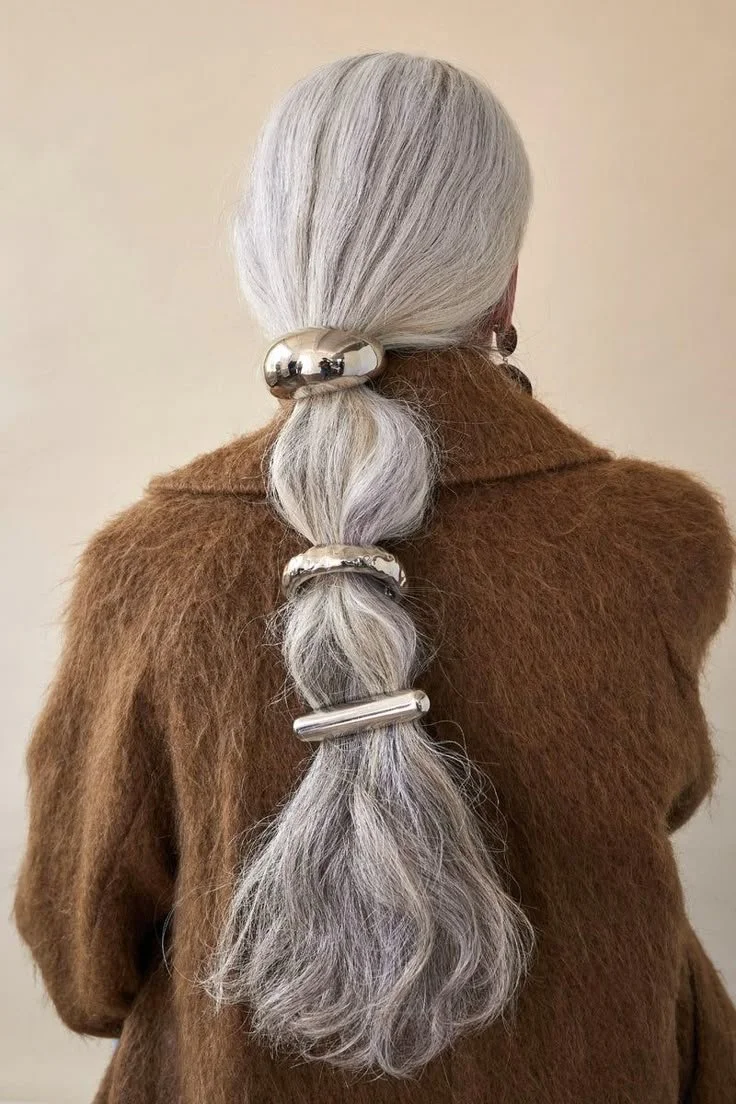Why Does Hair Turn Grey? Understanding the Science Behind It
Have you ever wondered why your hair gradually turns grey as you age? It's a natural part of life that many of us experience, but there’s more to it than just growing older. In this post, we’ll explore the fascinating science behind why our hair turns grey and the factors that contribute to this common transformation.
The Basics of Hair Colour
Before we dive into why hair goes grey, let’s first understand how our hair gets its colour. Hair colour is determined by a pigment called melanin, which is produced by cells known as melanocytes.
There are two main types of melanin:
Eumelanin: Gives hair its black or brown shades.
Pheomelanin: Produces red and yellow shades.
The combination of these types of melanin determines your hair’s natural colour.
Why Does Hair Turn Grey?
As we age, the production of melanin slows down, and eventually, melanocytes stop producing melanin altogether. This leads to grey or white hair. Several factors contribute to this natural process.
Genetics
Your genes play a significant role in when and how your hair turns grey. If your parents or grandparents went grey early, you may experience it at a younger age as well.
Age
As we grow older, the activity of melanocytes decreases. With less melanin being produced, your hair gradually loses its colour.
Oxidative Stress
Environmental factors such as UV rays, pollution, and smoking can cause oxidative stress in the body. This stress damages melanocytes, impairing their ability to produce melanin, which can speed up the greying process.
Hormonal Changes
Hormonal changes, especially those that occur during menopause or thyroid imbalances, can disrupt melanin production and contribute to early greying.
Nutritional Deficiencies
A lack of key vitamins and minerals—like vitamin B12, iron, and copper—can impact your body’s ability to produce melanin. A well-balanced diet rich in these nutrients can help maintain your hair's natural colour.
Ethnicity
Your ethnic background can influence how early you start greying. People with lighter skin and hair often go grey earlier than those with darker skin and hair.
Stress
While stress itself doesn't directly cause grey hair, it can accelerate the process. Chronic stress releases hormones that interfere with melanin production, potentially leading to premature greying.
How to Slow Down the Greying Process
While you can’t completely prevent grey hair, there are steps you can take to slow the process:
Manage stress: Reducing stress through relaxation techniques can help support overall health and potentially slow down the greying process.
Nutritional support: Eating a balanced diet rich in vitamins and minerals is essential for maintaining healthy hair.
Healthy lifestyle: Avoiding excessive exposure to UV rays and pollution, and quitting smoking, can help protect your melanocytes and slow the greying process.
Embrace Your Grey Hair with Confidence
Grey hair is a natural sign of aging, but it’s also a testament to the wisdom and experiences you’ve gained over the years. Embrace the beauty of grey hair as a part of your unique journey. While there’s no way to completely stop the process, understanding why it happens can help you appreciate this transformation and take better care of your hair as it evolves.
However, if you’re not ready to fully embrace your grey and want to soften the transition, there are ways to blend your greys and make them a stylish feature. Here are some options:
1. Demi-Permanent Colour to Blend Greys
If you prefer a more subtle approach, using demi-permanent color can be a great option. Demi-permanent color deposits color without permanently altering your natural shade, making it ideal for blending greys. It gently adds depth and richness to your hair while softening the lines between grey and natural hair, creating a seamless and natural look. This option is perfect for those who want to embrace their greys without committing to a full colour change.
2. Highlights and Lowlights to Soften the Grey
Another excellent way to manage greys is by using highlights and lowlights. Adding lighter shades with highlights or darker shades with lowlights can blend the grey, soften its appearance, and create dimension. The contrast between the highlights and lowlights will prevent your hair from looking flat, while giving a more natural, sun-kissed effect that’s perfect for those who want to embrace their greys without feeling overwhelmed by them.
These techniques can not only help blend greys but also add a touch of elegance and vibrancy to your hair. Whether you prefer a soft, blended look or a more dramatic contrast, your stylist can customize the approach based on your preferences.
Final Thoughts on Embracing Grey Hair
Grey hair doesn’t have to be a sign of aging or something to hide. Whether you choose to embrace it fully or soften the look with color techniques like demi-permanent colour, highlights, or lowlights, grey hair can be a beautiful part of your hair’s journey.
By understanding the science behind grey hair and the options available to blend or soften it, you can confidently choose the right path for your hair’s future. Embrace your grey with grace, knowing that it’s just another step in the story of your hair.


